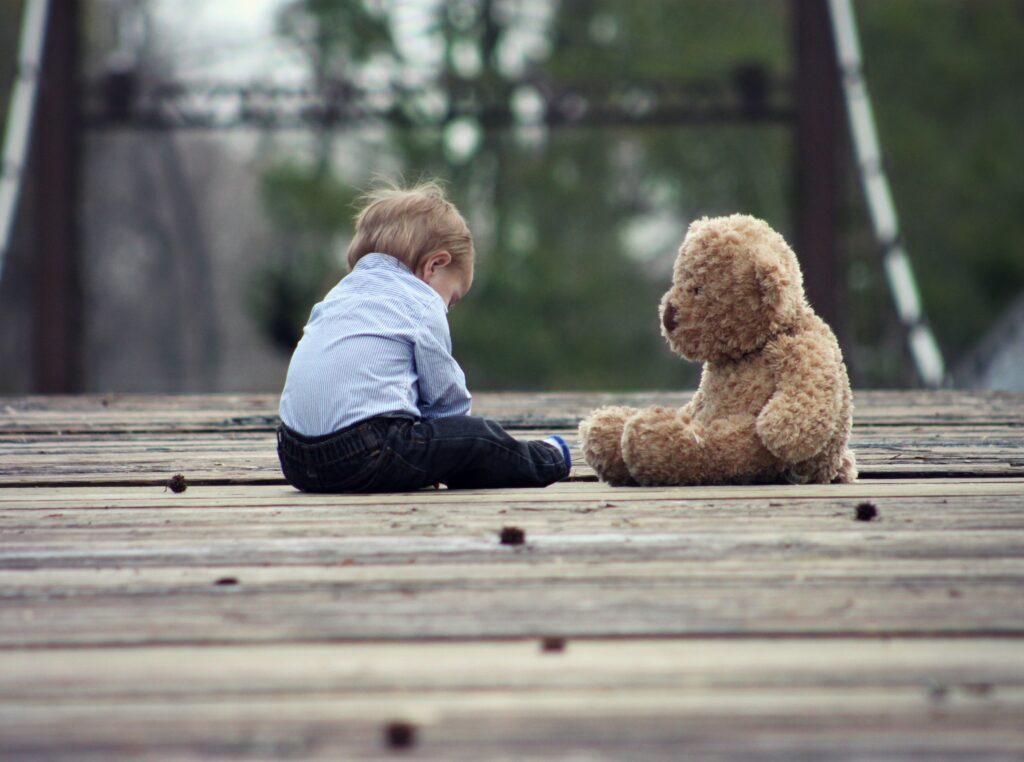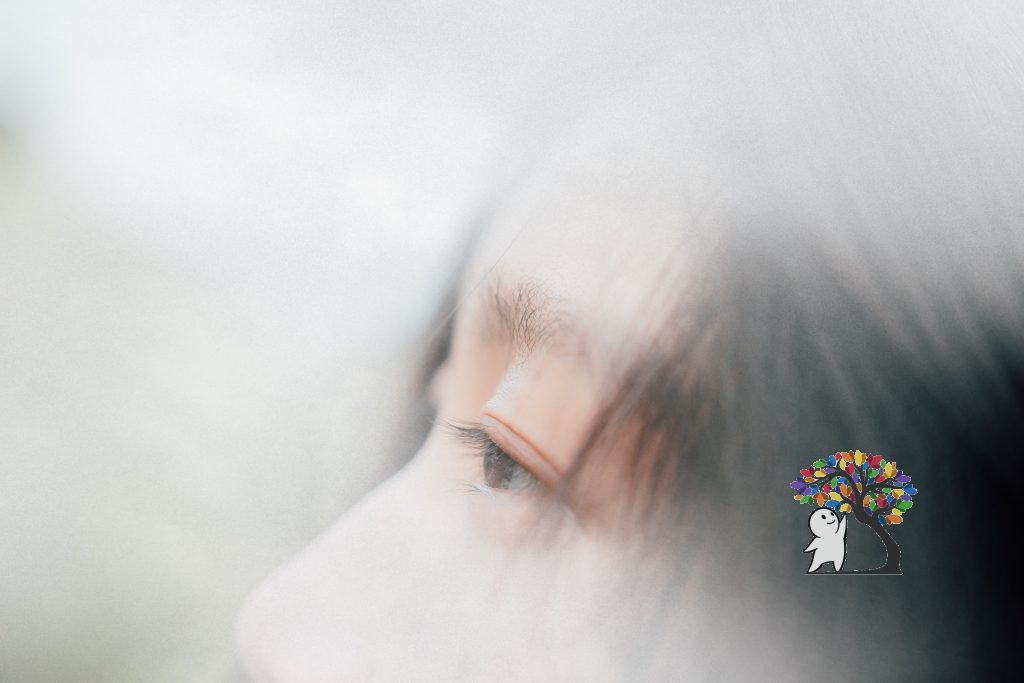5 Reasons Why Parents Abuse Their Children

TRIGGER WARNING! This article describes parental characteristics that contribute to child abuse. It is NOT intended to justify abuse in any means! Its purpose is to deepen the understanding and raise awareness of a widespread problem of child maltreatment. It’s also not intended to diagnose or treat any condition. But due to its nature, it could be triggering to viewers who experienced abuse in childhood. If you’re a survivor of child abuse and think this article might be too intense to read, please proceed with caution.
According to American Society for the Positive Care of Children, child abuse reports in 2020 involved 7.1 million children.
90.6% of these victims were maltreated by one or both parents.
It is estimated that 1,750 children died from abuse and neglect.
All of these children, and many more whose struggles never got reported, were betrayed by their family. Betrayed by someone they knew, loved and trusted.
It’s a truly scary and heartbreaking reality. But at the same time, it makes us wonder: why? Why would a parent hurt an innocent child, the same child they brought to life?
During decades of research, psychologists and social workers identified different risk factors of child maltreatment. Those are specific characteristics of a parent that increase the likelihood of a child being abused. Understanding why abuse happens can help our society fight against it.
Here are 5 risk factors of child abuse.
1. Poverty
According to study published in Journal of Pediatric Surgery, millions of U.S. residents had lost their jobs in May 2020, during the outbreak of the Coronavirus. That same year, 47 children’s hospitals reported over 20 thousand physical child abuse cases (de Boer et al., 2022).
This example illustrates the well-established role job loss and poverty have in child abuse. According to National Center for Injury Prevention and Control, Division of Violence Prevention, rates of child abuse and neglect are 5 times higher for children in families with low socioeconomic status (Centers for Disease Control and Prevention, 2022).
Researchers believe that stress associated with poverty can affect parents’ abilities to meet their children’s needs. Struggling to provide the day-to-day necessities of their children can make parents anxious, depressed, fearful, and overwhelmed. Living in harsh, deprived conditions can have a disabling effect on their capacities. These factors combined may result in inconsistent discipline, failure to respond to a child’s emotional needs, or failure to prevent or address a potential risk to a child’s safety (Duva & Metzger, 2010).
What do you think: how could social policies help prevent poverty to minimize the risk of child abuse?
2. Skills
Even in 1983, parenting was described as the ‘last stand of the amateur’ – the one occupation that doesn’t require any training or educational qualifications. And until today, society still assumes that parenting skills are natural and instinctive.
But what happens when those ‘instincts’ to protect and support children fail? It may leave children exposed to the risk of child maltreatment (Tomison, 1998).
A 2018 research states that the lack of knowledge, skills and competence necessary for the care of children are among the most common factors contributing to child abuse (Khosravan et al., 2018).
However, some researchers consider this factor to be preventable (Teresi et al., 2016). As proposed by the World Health Organization, numerous programs have been developed to improve parenting skills and prevent child abuse. Those programs focus on parenting skills, parents’ psychological health and parent-child conflicts (Alonso-Marsden et al., 2013).
Which parenting skills do you think parents should learn before having their children?
3. Attitudes
A 2020 study suggests that another important risk factor for child abuse is parental attitudes and beliefs. Authors of the study made an overview of some of these attitudes.
Parents that are more likely to abuse their children have unrealistic expectations about child development; they might see children as more mature than they actually are. Attitudes that parents have about corporal punishment have also been related to child abuse. Higher belief in the value of corporal discipline can make parents more likely to use coercive discipline methods (Camilo et al., 2020).
Research published in journal Child Abuse and Neglect found increased risk for children whose parents lacked knowledge of appropriate disciplinary strategies and expected high compliance and obedience (Rodriguez et at., 2016).
Some recent studies show that these beliefs don’t have to be conscious, but can impact a parent’s behavior on an unconscious level. That’s why sometimes, parents may abuse their children without even realizing it (Johnston et al., 2017).
What do you think – which attitudes could lead parents to abuse their children, knowingly or not?
4. Intergenerational transmission
Do you think that abusers raise abusers?
In most cases, sufferers of abuse grow up determined never to make mistakes their parents made. But sometimes, they may end up continuing the cycle of abuse with their children. This is called intergenerational transmission of child maltreatment. A 2018 research examined parents who were physically maltreated as children. Results showed that physical abuse history increased the risk of abusing and neglecting their own children.
5. Personality
Parents who suffer from untreated personality disorders can show abusive behavior. A 2019 study found that parents with borderline personality disorder suffer from increased parenting stress. Because of that, they may act in a way that prevents the formation of a healthy parent-child relationship (Florange & Herpertz, 2019). But, a study published in the journal Advances in Mental Health shows that if they seek professional help, parents with BPD can still overcome these challenges and learn better parenting skills (Bartsch et al., 2015).
Closing thoughts
Child abuse is an alarmingly common form of abuse. But remember: it’s never about the child. It never happens because a child is “bad”. It’s a result of a parent who forgot to, or couldn’t, take care of themselves first – a flawed person bringing their problems onto helpless children.
Please check out the resources below if you worry a child you know might be in danger or if you’re a child living in an abusive family.
If you were abused as a child and still battle the side effects, please reach out to a mental health professional to get the help you deserve.
Childhelp® National Child Abuse Hotline
- 1-800-4-A-CHILD
National Domestic Violence Hotline
- 1−800−799−SAFE(7233)
- TTY 1−800−787−3224
- (206) 518-9361 (Video Phone Only for Deaf Callers)
Kids Help Phone (Canada): 1 800 668 6868
Kids Helpline (Australia): (+61) 1800 55 1800
Kidsline (New Zealand): 0800 5437 5463
NSPCC/Childline UK (United Kingdom): 0800 1111
Visit this link for additional resources in other countries and continents.
Resources:
Alonso-Marsden, S., Dodge, K. A., O’Donnell, K. J., Murphy, R. A., Sato, J. M., & Christopoulos, C. (2013). Family risk as a predictor of initial engagement and follow-through in a universal nurse home visiting program to prevent child maltreatment. Child Abuse & Neglect, 37(8), 555–565. https://doi.org/10.1016/j.chiabu.2013.03.012
Bartsch, D. R., Roberts, R. M., Davies, M., & Proeve, M. (2015). Borderline personality disorder and parenting: clinician perspectives. Advances in Mental Health, 13(2), 113–126. https://doi.org/10.1080/18387357.2015.1065554
Camilo, C., Garrido, M. V., & Calheiros, M. M. (2020). Parental Attitudes in Child Maltreatment. Journal of Interpersonal Violence, 37(5–6), 2920–2947. https://doi.org/10.1177/0886260520943724
Child Maltreatment & Neglect Statistics | American SPCC – Effects of Parental Alcohol Abuse. (2022, June 13). American SPCC. https://americanspcc.org/child-maltreatment-statistics/
de Boer, C., Ghomrawi, H. M., Bouchard, M. E., Linton, S. C., Tian, Y., & Abdullah, F. (2022). Effect of the COVID-19 pandemic on presentation and severity of traumatic injury due to physical child abuse across US children’s hospitals. Journal of Pediatric Surgery, 57(4), 726–731. https://doi.org/10.1016/j.jpedsurg.2021.06.014
Duva, J., & Metzger, S. (2010). Addressing Poverty as a Major Risk Factor in Child Neglect: Promising Policy and Practice. American Humane, 25(1), 63–74. https://childhub.org/sites/default/files/attachments/addressing-poverty-as-a-major-risk-factor-in-child.pdf
Fast Facts: Preventing Child Abuse & Neglect |Violence Prevention|Injury Center|CDC. (2022). Centers For Disease Control and Prevention. https://www.cdc.gov/violenceprevention/childabuseandneglect/fastfact.html
Florange, J. G., & Herpertz, S. C. (2019). Parenting in Patients with Borderline Personality Disorder, Sequelae for the Offspring and Approaches to Treatment and Prevention. Current Psychiatry Reports, 21(2). https://doi.org/10.1007/s11920-019-0996-1
Johnston, C., Belschner, L., Park, J. L., Stewart, K., Noyes, A., & Schaller, M. (2017). Mothers’ Implicit and Explicit Attitudes and Attributions in Relation to Self-Reported Parenting Behavior. Parenting, 17(1), 51–72. https://doi.org/10.1080/15295192.2016.1184954
Rodriguez, C. M., Smith, T. L., & Silvia, P. J. (2016). Multimethod prediction of physical parent–child aggression risk in expectant mothers and fathers with Social Information Processing theory. Child Abuse & Neglect, 51, 106–119. https://doi.org/10.1016/j.chiabu.2015.10.028
Teresi, J. A., Burnes, D., Skowron, E. A., Dutton, M. A., Mosqueda, L., Lachs, M. S., & Pillemer, K. (2016). State of the science on prevention of elder abuse and lessons learned from child abuse and domestic violence prevention: Toward a conceptual framework for research. Journal of Elder Abuse & Neglect, 28(4–5), 263–300. https://doi.org/10.1080/08946566.2016.1240053
Tomison, A. (1998, September). Valuing parent education: A cornerstone of child abuse prevention. Australian Institute of Family Studies. https://aifs.gov.au/resources/policy-and-practice-papers/valuing-parent-education-cornerstone-child-abuse-prevention
Yang, M. Y., Font, S. A., Ketchum, M., & Kim, Y. K. (2018). Intergenerational transmission of child abuse and neglect: Effects of maltreatment type and depressive symptoms. Children and Youth Services Review, 91, 364–371. https://doi.org/10.1016/j.childyouth.2018.06.036



Responses